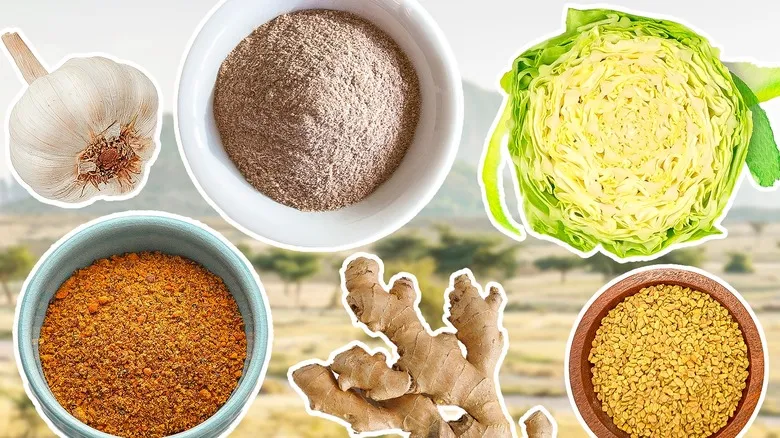Teff flour

Teff flour is an essential component of Ethiopian cuisine, serving as the foundation for injera, the traditional flatbread that accompanies most meals. This gluten-free flour is derived from teff, a small grain indigenous to Ethiopia.
Teff boasts a distinct, mildly nutty flavor and is rich in nutrients such as protein, fiber, calcium, and iron. Various types of teff produce different flours, with brown and ivory teff flour being the most prevalent. Each type has a unique taste, but in many international markets, you may only find one variety. Teff flour is also available for purchase online.
Using teff flour in cooking takes some practice. To prepare authentic injera, teff flour is combined with water to form a batter that undergoes fermentation, similar to the process of ripening a sourdough starter for bread. Additionally, teff flour can be incorporated into other recipes to enhance nutrition and impart a distinctive flavor. It can be used in place of buckwheat flour, contributing a delightful nutty aroma and texture.
Berbere spice mix

Berbere is a vital spice blend in Ethiopian cuisine, serving as the foundation for numerous dishes. This spicy and fragrant mixture usually consists of chili peppers, garlic, ginger, and a variety of aromatic spices such as fenugreek, coriander, cardamom, and nutmeg, which contribute a woody and slightly bitter taste, along with cinnamon, a spice with a rich historical significance in the area. Each region, and often each family, has its own distinctive berbere recipe, featuring subtle variations in the spices and their proportions.
While you can find berbere spice mix in select specialty spice shops or stores that offer Ethiopian ingredients, making your own blend allows you to tailor the flavors to your liking. For instance, you can modify the heat level by adjusting the quantity of chili peppers, ensuring a more enjoyable experience when trying this cuisine for the first time.
To prepare berbere at home, start by selecting a recipe that appeals to you. For optimal results, use whole spices whenever possible and toast them before grinding. This process releases essential oils and enhances the aroma of the blend. You can store the whole spices in a jar, grinding only what you need to maintain their freshness.
Korerima (Ethiopian cardamom)
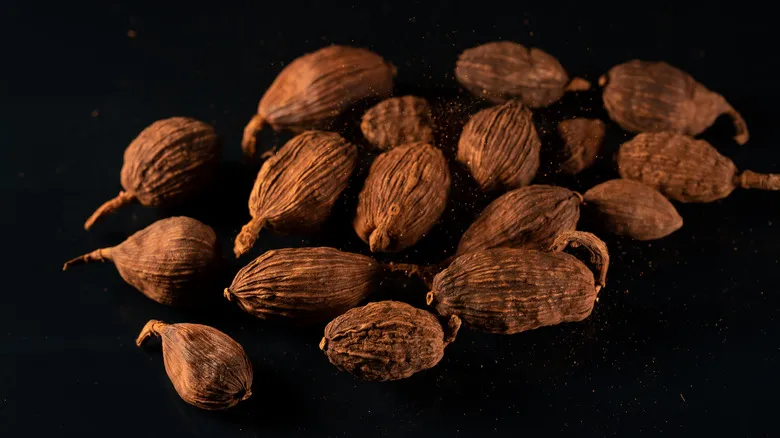
Korerima, often referred to as black or Ethiopian cardamom, is an essential spice in Ethiopian cuisine. Indigenous to southwestern Ethiopia, this spice, which belongs to the ginger family, has been a staple in traditional recipes for centuries. The seeds of korerima have a tangy and astringent flavor, releasing a unique aroma when ground. This intricate taste, featuring hints of citrus and camphor, serves as a fundamental element in many Ethiopian dishes, as well as some Indian recipes.
In Ethiopian cooking, korerima is appreciated not only for its flavor but also for its believed health benefits. It is frequently used as a primary component in berbere spice blends, niter kibbeh (spiced butter), and a variety of stews and soups. Additionally, it enhances spice rubs for meats and vegetables, making it a versatile ingredient in the kitchen.
Clarified butter (niter kibbeh)
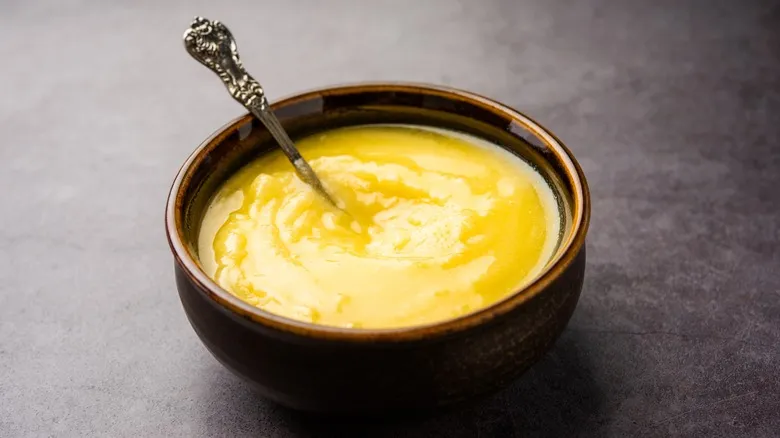
Clarified butter, referred to as niter kibbeh in Ethiopian cuisine, is a vital component that significantly contributes to the distinctive flavors and aromas of numerous Ethiopian dishes. This golden, spice-infused butter is not merely a cooking fat; it serves as a flavor enhancer that brings depth, richness, and complexity to a variety of recipes.
The preparation of niter kibbeh involves gently simmering butter with a mix of aromatic spices, including cardamom, coriander, cumin, turmeric, and garlic. This infusion imparts a unique taste and aroma to the butter, forming the foundation for many Ethiopian dishes. The clarified butter enhances and activates the flavors of other spices used in Ethiopian cooking. Additionally, the clarification process eliminates milk solids, resulting in a pure butterfat with a higher smoke point, making it suitable for cooking at elevated temperatures.
Niter kibbeh is utilized in numerous ways within Ethiopian cuisine. It often serves as a base for stews, is added to sautéed dishes, and is used to finish and enrich various recipes. It is also a key ingredient in kifto, a raw meat dish that serves as Ethiopia's version of tartare.
Beyond its culinary uses, niter kibbeh has practical benefits. Given that some Ethiopian tribes are nomadic and the country experiences very hot conditions, a butter with a longer shelf life is a valuable asset in a cuisine that traditionally lacks refrigeration. The spices incorporated in its preparation are also thought to possess preservative qualities.
Fenugreek
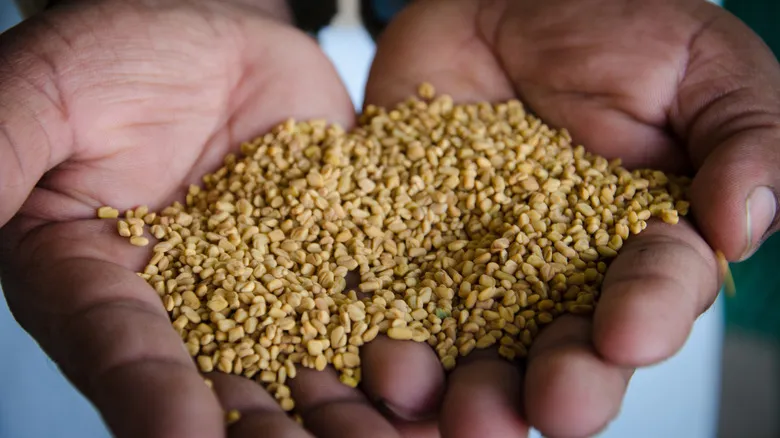
Fenugreek, referred to as abish in Amharic, is characterized by its mild bitterness and a subtly sweet, nutty taste reminiscent of maple syrup. This adaptable spice is available in two main forms: whole seeds and ground powder. It is a staple in clarified butter, Ethiopian fenugreek-infused water, and fenugreek candy. Historically, it has been incorporated into injera and continues to be a common ingredient today.
In Ethiopian cooking, whole fenugreek seeds are often lightly toasted to amplify their flavor and aroma, while the ground version is commonly found in spice blends such as berbere. For those new to Ethiopian fenugreek, soaking it for at least an hour before use can help soften its flavor. It serves as an excellent addition to Ethiopian lentil dishes, cabbage stew (known as wat), and even honey cakes.
Mitmita spice
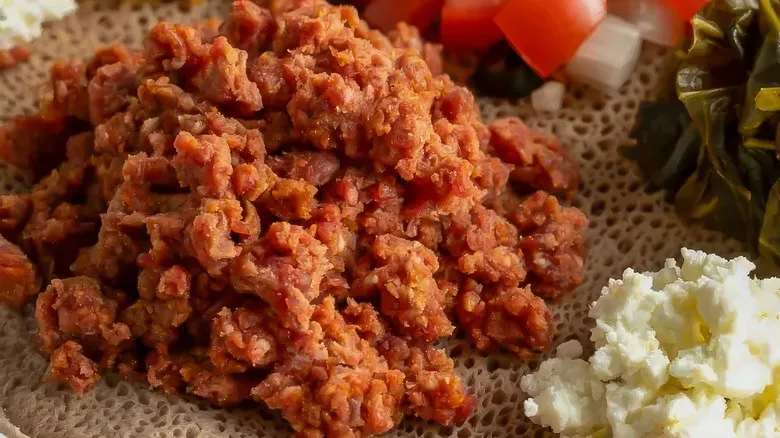
Mitmita is a spicy Ethiopian seasoning that brings a fiery kick to various dishes. This vibrant red-orange powder can be found in Ethiopian markets or specialty spice shops. The primary component of mitmita is dried chili peppers, typically the African bird's eye variety, which are small but incredibly potent. To temper the heat, mitmita also incorporates fragrant spices such as Ethiopian cardamom, cumin, and cloves.
You can use mitmita to enhance both raw and cooked meat dishes, and it’s especially favored when sprinkled on kitfo, a dish made with minced raw beef. This spice blend also enriches stews, vegetables, and lentil recipes.
For those who enjoy culinary experimentation, making your own mitmita at home can yield the freshest flavor. To craft your ideal blend, toast and grind whole African bird's eye chilies, cardamom, cumin, and other spices. Store your homemade mixture in a sealed jar in a cool, dark location to preserve its essential oils and maintain its potency.
Shiro powder
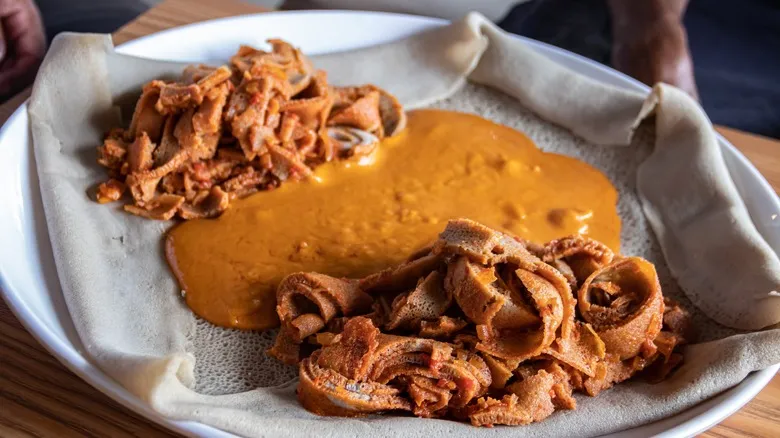
Shiro powder is a distinctive ingredient in Ethiopian cuisine, made from ground chickpea flour combined with various spices. It serves as the foundation for shiro wat, a beloved Ethiopian stew.
To prepare shiro powder at home, start with chickpea flour as your primary ingredient. Lightly roast the flour in a dry skillet without any oil. Next, season the flour with berbere spice, ground cardamom, cumin powder, and garlic powder to create your shiro powder. Some variations of shiro powder may include additional ingredients like ground dried onions or fava beans, but these are optional.
Once your shiro powder is ready, you can mix it with sautéed onions and tomatoes. Gradually add water to achieve a smooth texture, then incorporate chickpeas and cook. The outcome is a rich, creamy chickpea stew that pairs wonderfully with injera bread. Like many Ethiopian dishes, shiro powder is low in fat while being high in protein and fiber, making it an excellent choice for vegetarians and vegans.
Besobela (sacred basil)
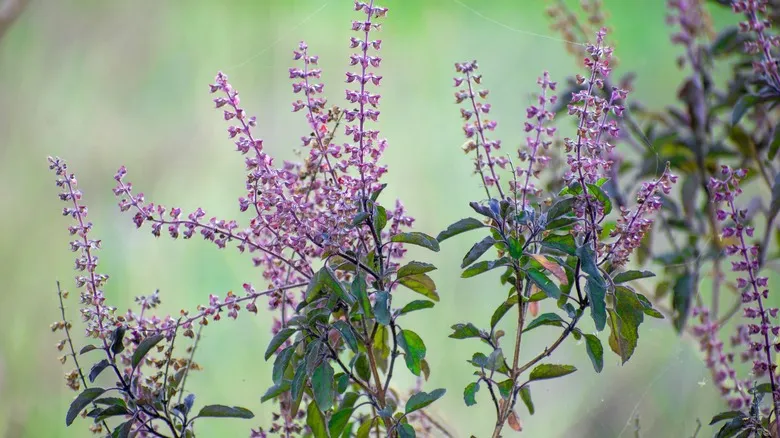
Besobela, often referred to as Ethiopian sacred basil, is a distinctive herb that plays a vital role in traditional Ethiopian cuisine. Unlike regular basil, it boasts a unique flavor profile characterized by strong minty notes, a pleasantly warm clove-like taste, subtle hints of anise, and a peppery finish.
You'll encounter besobela in several essential Ethiopian dishes. It is a key component of niter kibbeh, the spiced clarified butter that serves as the foundation for many Ethiopian recipes. The herb adds a rich, aromatic flavor that is challenging to mimic with alternatives. If you're striving for authentic Ethiopian tastes, seeking out genuine besobela is definitely worthwhile.
If besobela is unavailable, some chefs recommend a blend of basil and oregano as a substitute. However, it's important to note that this combination will not fully capture the distinctive flavor of authentic Ethiopian sacred basil.
Lentils
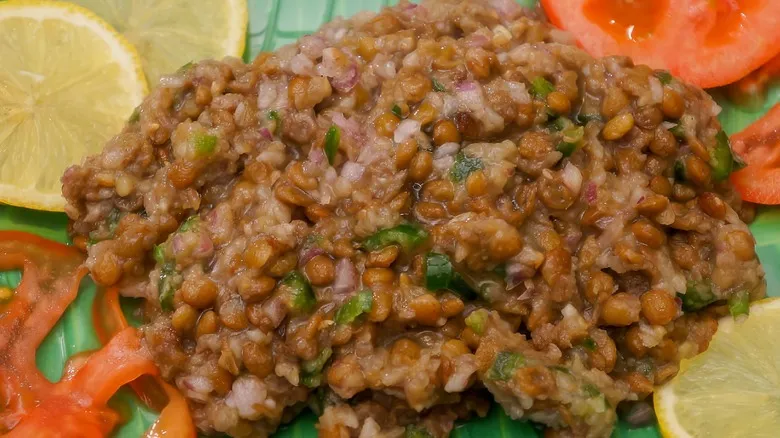
Lentils play a vital role in Ethiopian cuisine, appearing in many cherished dishes. Red lentils are commonly featured in misir wat, a rich and flavorful stew that is a staple in Ethiopian households, as well as in azifa, a salad made with cooked lentils, chopped vegetables, and peppers. The primary lentils used in Ethiopian cooking are red and green varieties.
When making Ethiopian lentil dishes, begin by rinsing and sorting your lentils to eliminate any debris or stones. Soaking them for 30 to 60 minutes can also help shorten cooking time and enhance their texture.
Feel free to experiment with various spice combinations to discover your ideal flavor profile. For instance, red lentils pair beautifully with berbere, while green lentils serve as an excellent base for showcasing the robust, earthy flavors of garlic and ginger.
Cabbage
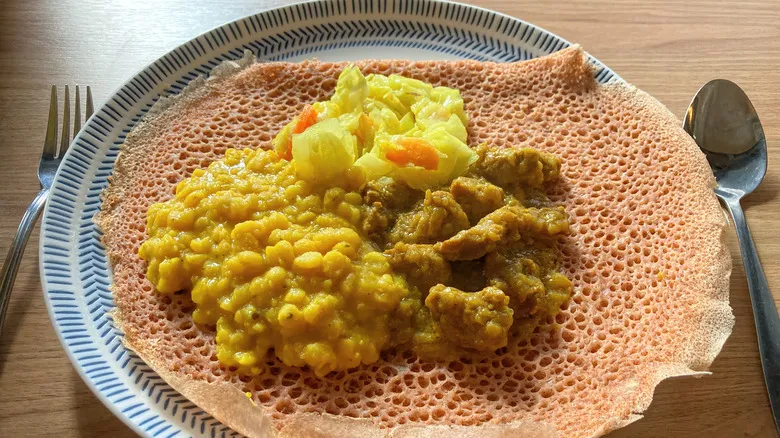
Cabbage is a highly adaptable ingredient in Ethiopian cuisine and serves as a fundamental element of any traditional Ethiopian meal. Unlike in Western cooking, where cabbage is often relegated to a side dish, in Ethiopian dishes, it frequently takes the spotlight, offering a robust and fulfilling foundation for stews, known as wats.
In Ethiopian cooking, cabbage is typically combined with potatoes, carrots, onions, garlic, and turmeric. It plays a significant role in dishes such as atakilt wat, a well-loved vegetable stew. Another cherished Ethiopian recipe, tikil gomen, highlights cabbage alongside potatoes and carrots.
To prepare cabbage in the Ethiopian style, slice it into thin strips to ensure it cooks quickly and absorbs the flavors of the other ingredients. Sauté the cabbage briefly to maintain a tender-crisp texture rather than letting it become mushy. Generally, cabbage is added towards the end of the cooking process, helping it to keep its texture and vibrant color.
Potatoes

Potatoes contribute heartiness and texture to a range of Ethiopian dishes, enhancing the bulk and making many recipes more satisfying. Their adaptability and capacity to soak up flavors make them a favored ingredient in numerous traditional dishes, such as tikil gomen and the beet and potato salad known as key sir alicha.
For Ethiopian cuisine, opt for waxy potatoes like red or yellow varieties, as they hold their shape well during cooking without turning mushy. Begin by washing and peeling them, then cut into 1-inch cubes and rinse to eliminate excess starch. This method ensures even cooking and allows the potatoes to absorb the rich spices and sauces effectively.
In Ethiopian cooking, potatoes are frequently sautéed with onions, garlic, and spices before being added to stews or served as side dishes. Their mild flavor makes them an excellent complement to both spicy meat dishes and vegetarian options.
Garlic
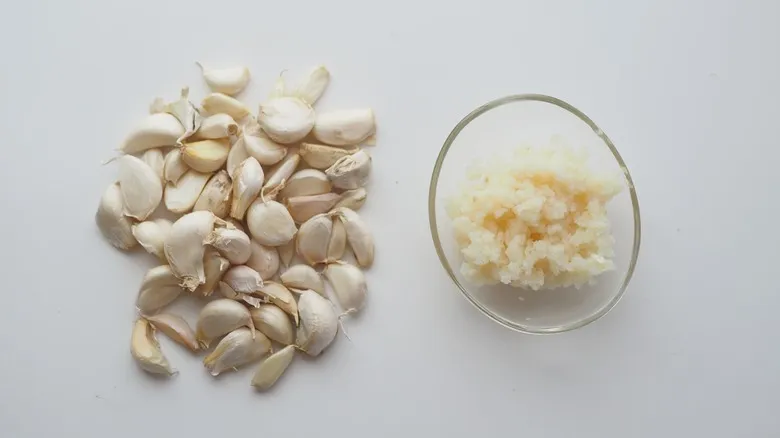
Garlic serves as a fundamental ingredient in numerous global cuisines, and Ethiopian cuisine is no exception. It imparts a sweet undertone, a touch of spice, and a distinctive tangy aroma and flavor to various Ethiopian stews, sauces, and marinades.
Ethiopian chefs typically utilize garlic in its raw state, either finely minced or crushed. This method releases its potent oils, resulting in a robust, pungent flavor that defines many Ethiopian dishes. When preparing Ethiopian meals at home, opt for fresh garlic cloves instead of pre-minced varieties to achieve the most intense flavor.
In conjunction with other spices, generous amounts of garlic form the foundation of many Ethiopian flavor profiles. It is often combined with ginger, onions, the berbere spice blend, and black cardamom. You'll find garlic featured in popular Ethiopian dishes such as doro wat, a spicy chicken stew, and misir wat, a red lentil dish. Don't hesitate to use more than just two cloves—Ethiopian recipes frequently call for two entire heads or at least six cloves in a single dish. However, be cautious not to overindulge, as excessive consumption can harm the liver.
Ginger

Ginger adds warmth and a distinctive aroma to a variety of dishes. Much like in Asian cuisine, this adaptable root is utilized in both savory and sweet Ethiopian recipes. In addition to its culinary applications, ginger holds cultural significance in Ethiopia, where it is believed to support digestion and enhance immunity.
In Ethiopian cooking, fresh ginger is preferred. When purchasing, seek out firm roots with smooth skin, and steer clear of any that feel soft or exhibit signs of mold. Ginger can be stored in the refrigerator or even frozen with a few simple methods. To prepare ginger for Ethiopian dishes, peel the skin using the edge of a spoon before grating or finely chopping it. The peel is considered unclean and detracts from the delicate flavor, so it is typically discarded.
Ginger is an essential ingredient in many Ethiopian spice blends, such as berbere and mitmita. It is also incorporated into Ethiopian spiced clarified butter. Often, ginger is combined with garlic and onions to form a flavorful base for numerous beloved Ethiopian recipes.
Famous Ethiopian dishes
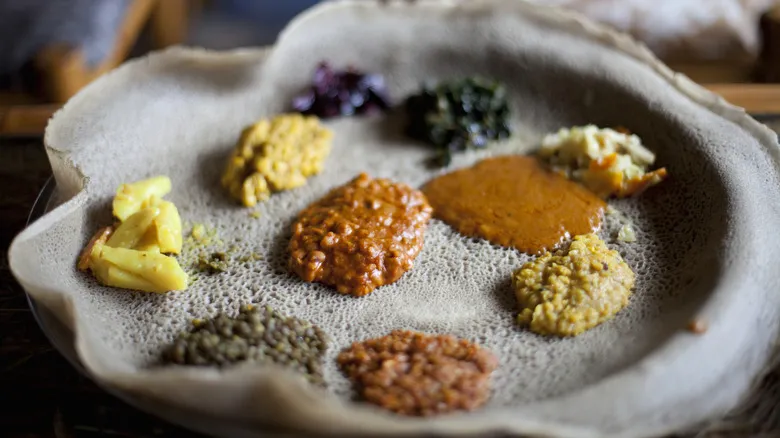
Now that you’re acquainted with the key ingredients and foundational elements of Ethiopian cuisine, I hope you feel prepared to embark on this exciting culinary adventure. Many renowned Ethiopian dishes feature these vital components, such as teff flour, the berbere spice blend, and shiro powder, and we’d like to introduce you to some of the most popular ones. While making traditional injera, a spongy flatbread made from teff flour, can be challenging, there are quicker adaptations that make this essential base for most Ethiopian meals more accessible for home cooks.
Some well-loved Ethiopian dishes include doro wat, a spicy chicken stew seasoned with berbere. Misir wat consists of red lentils cooked with berbere and spices, and we also enjoy preparing it with split peas. Tibs features sautéed meat (either beef or lamb) combined with vegetables, while tere siga is its raw counterpart. Beef kitfo, made from minced raw beef seasoned with the mitmita spice blend, is another dish we can’t resist.
Don’t worry; there are plenty of vegetarian options in Ethiopian cuisine as well. You’ll find dishes like gomen (collard greens), tikil gomen (cabbage and potatoes), and fosolia (green beans and carrots) on many menus. These can serve as a fantastic introduction to Ethiopian cooking for many home chefs. Equip yourself with some recipes, visit a well-stocked store, and embrace the spirit of exploration — just remember to leave any misconceptions and closed-mindedness behind.
Recommended

One Man Hated Manhattan Clam Chowder So Much He Tried To Make It Illegal In Maine

The Meteoric Rise, Fall, And Return Of Wonder Bread

Why You've Probably Never Tasted The Original Sriracha

The Science Behind Why We Eat Chicken Noodle Soup When Sick
Next up

